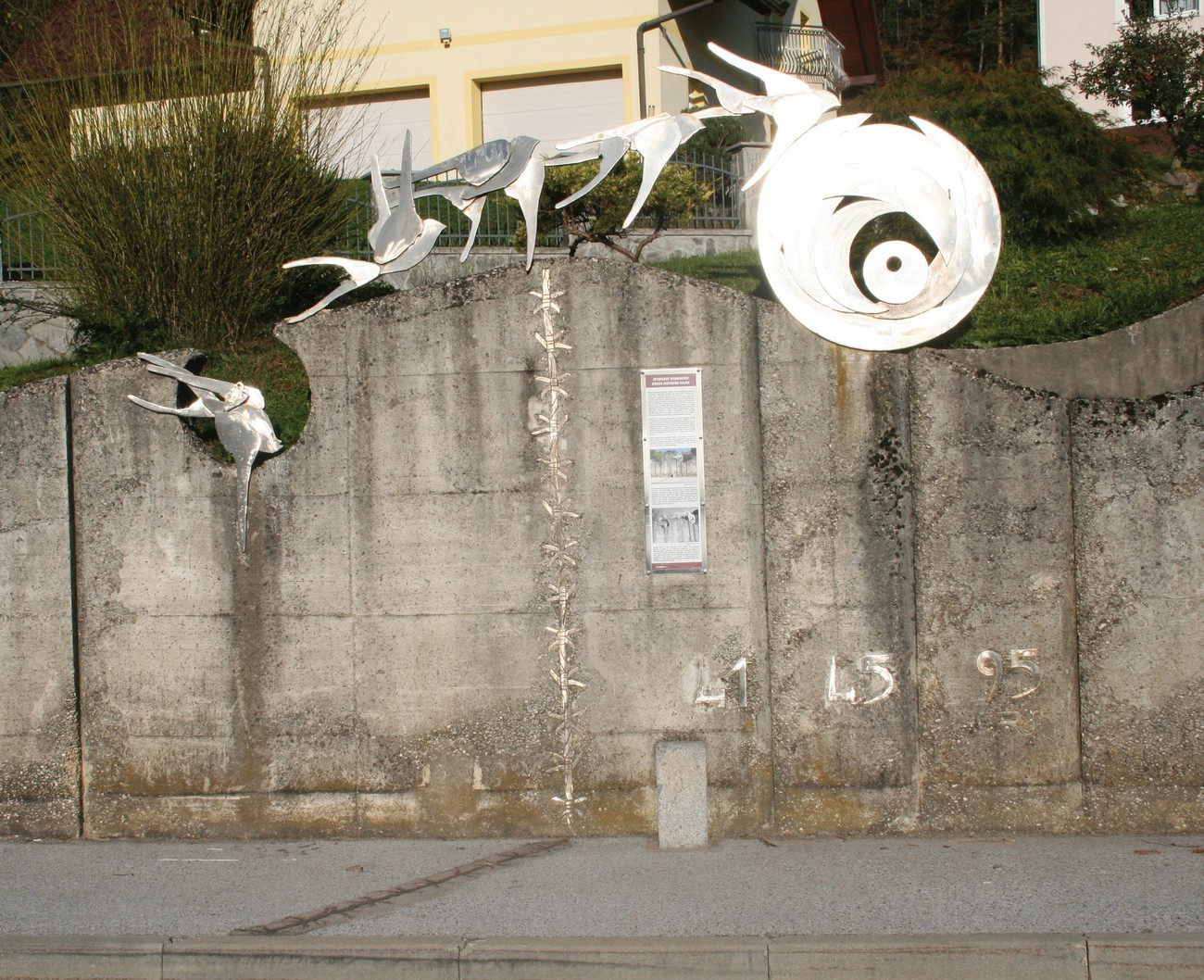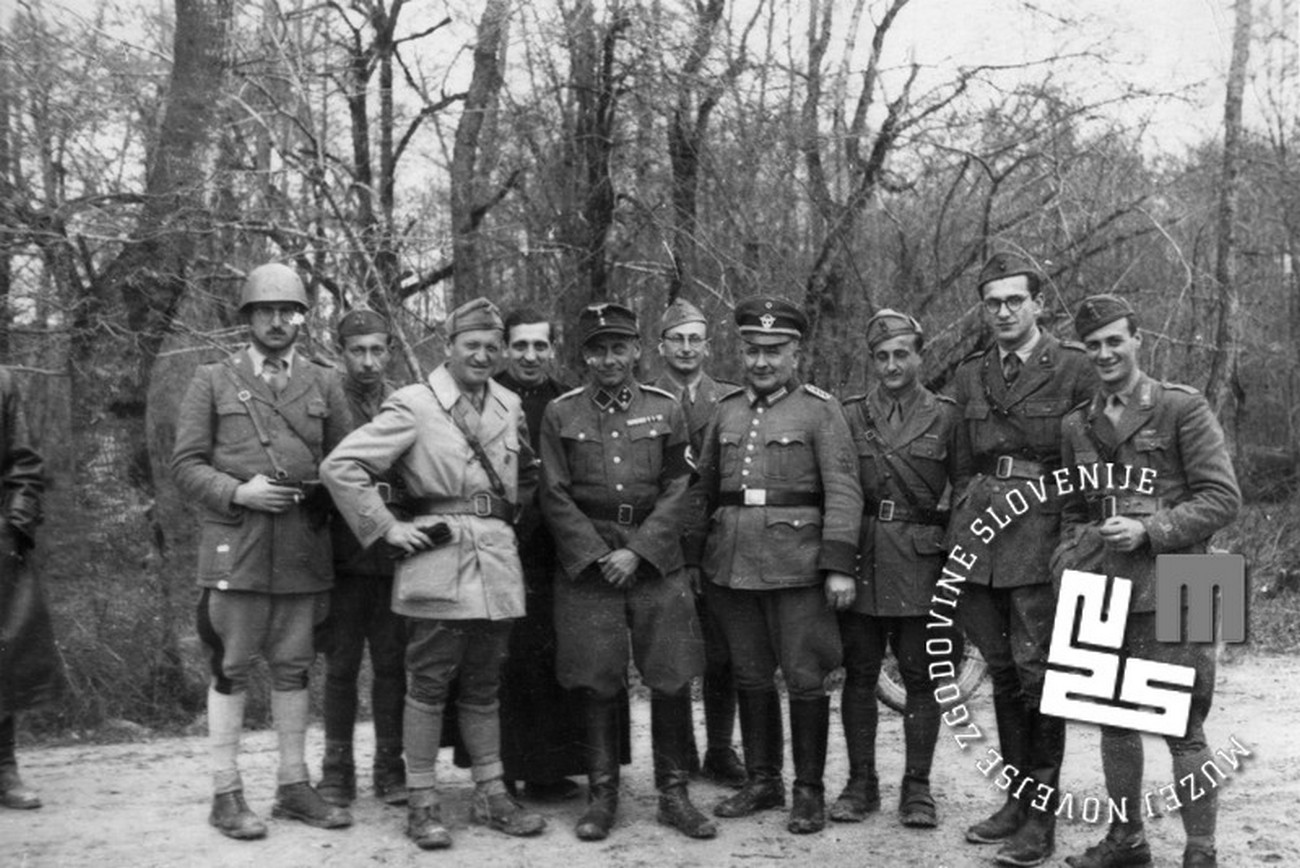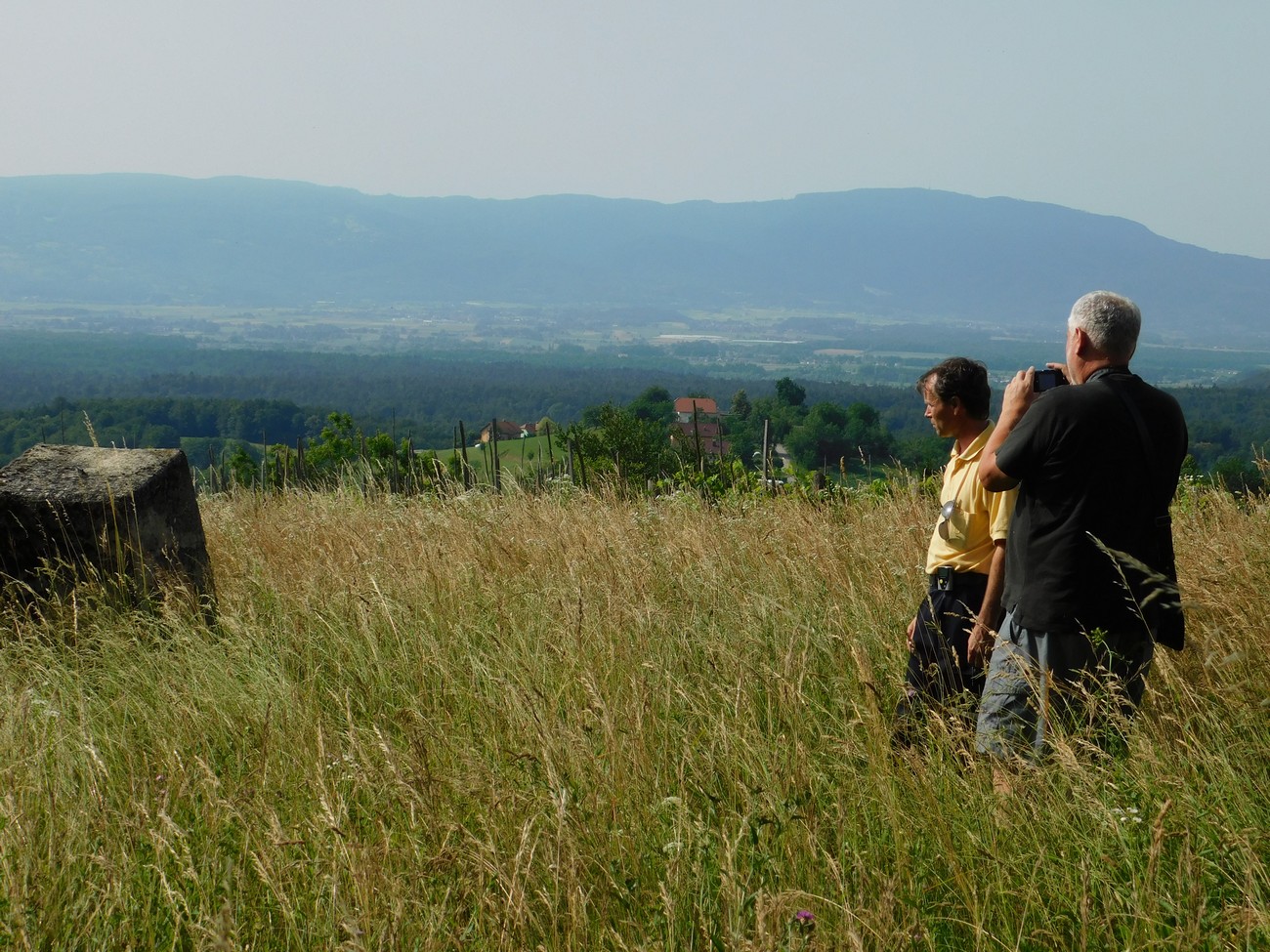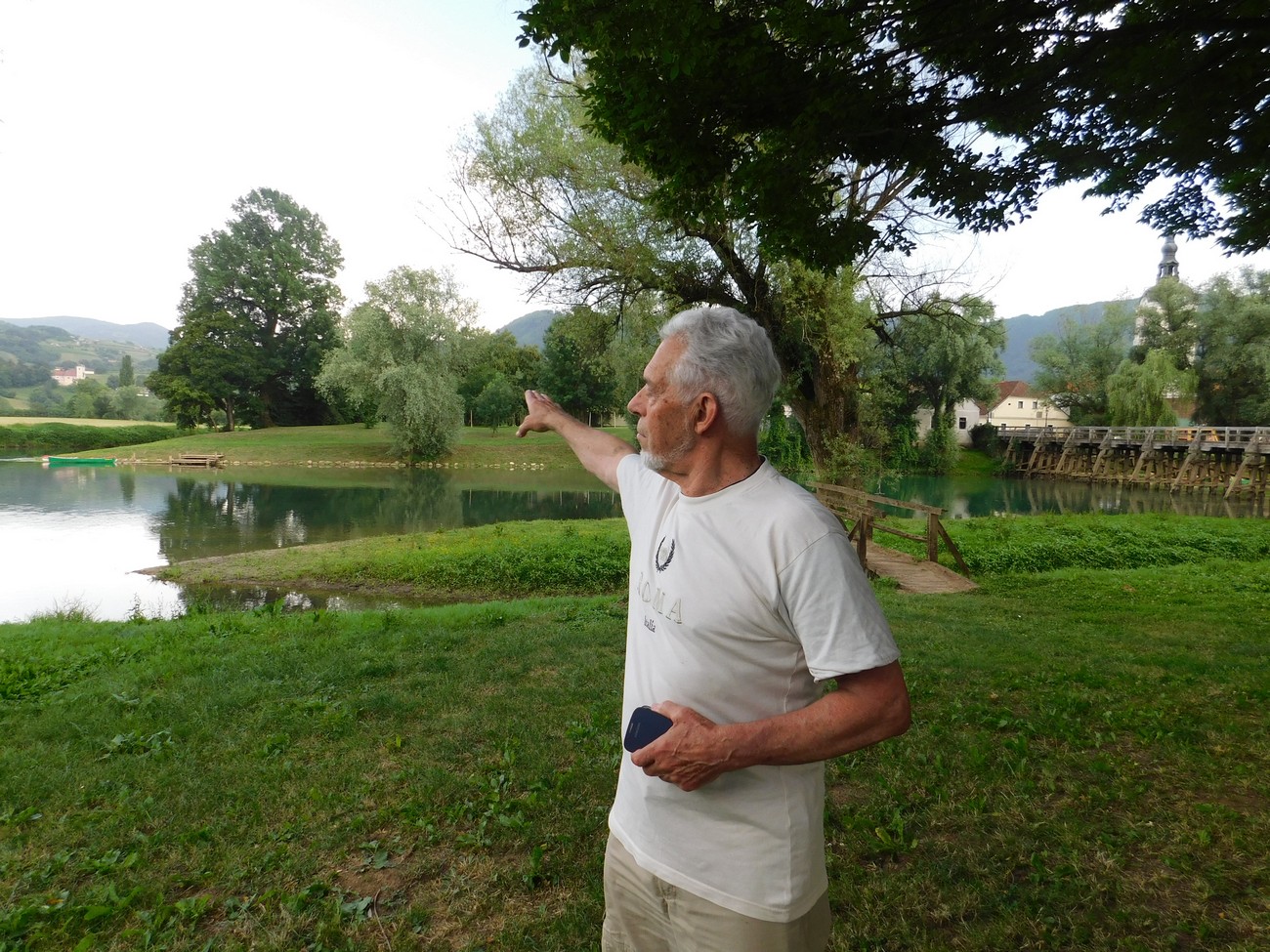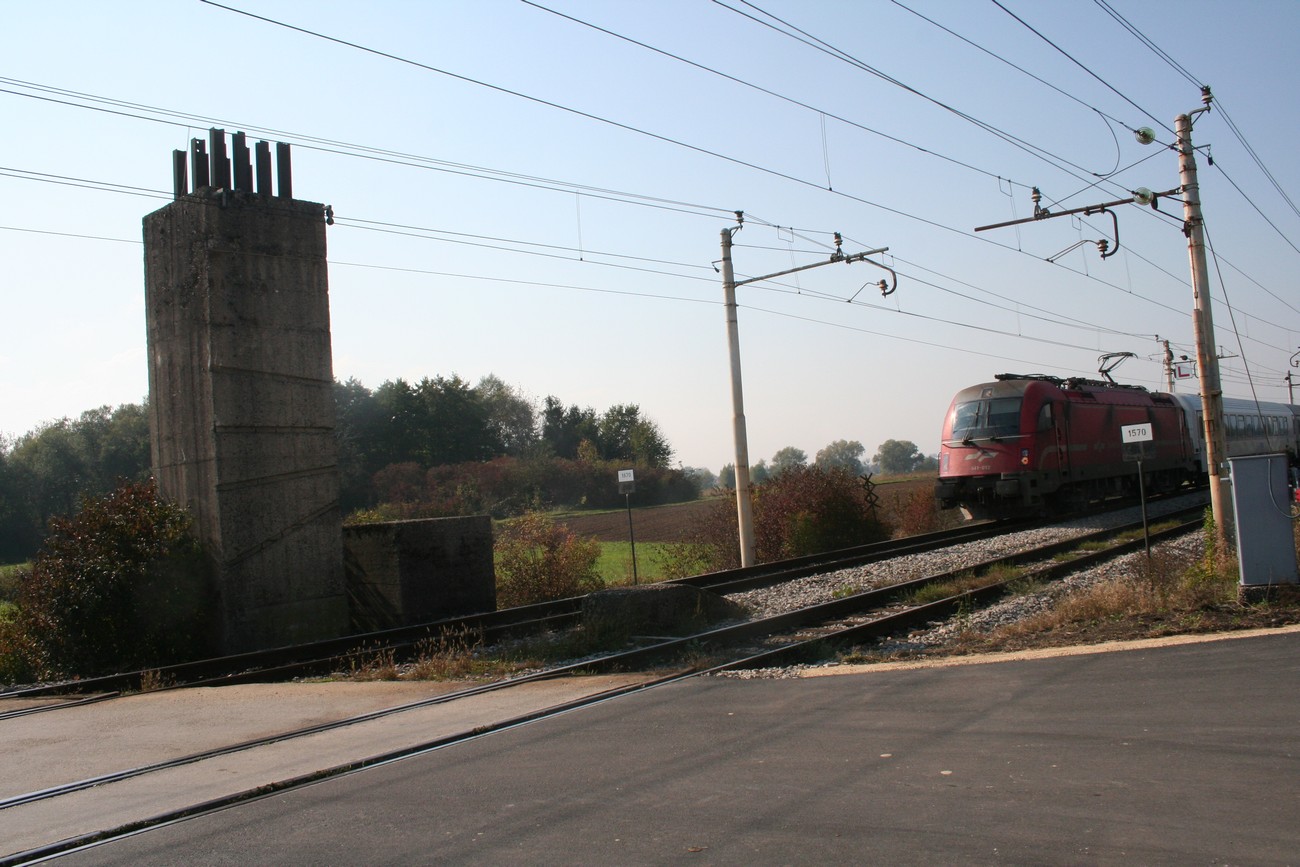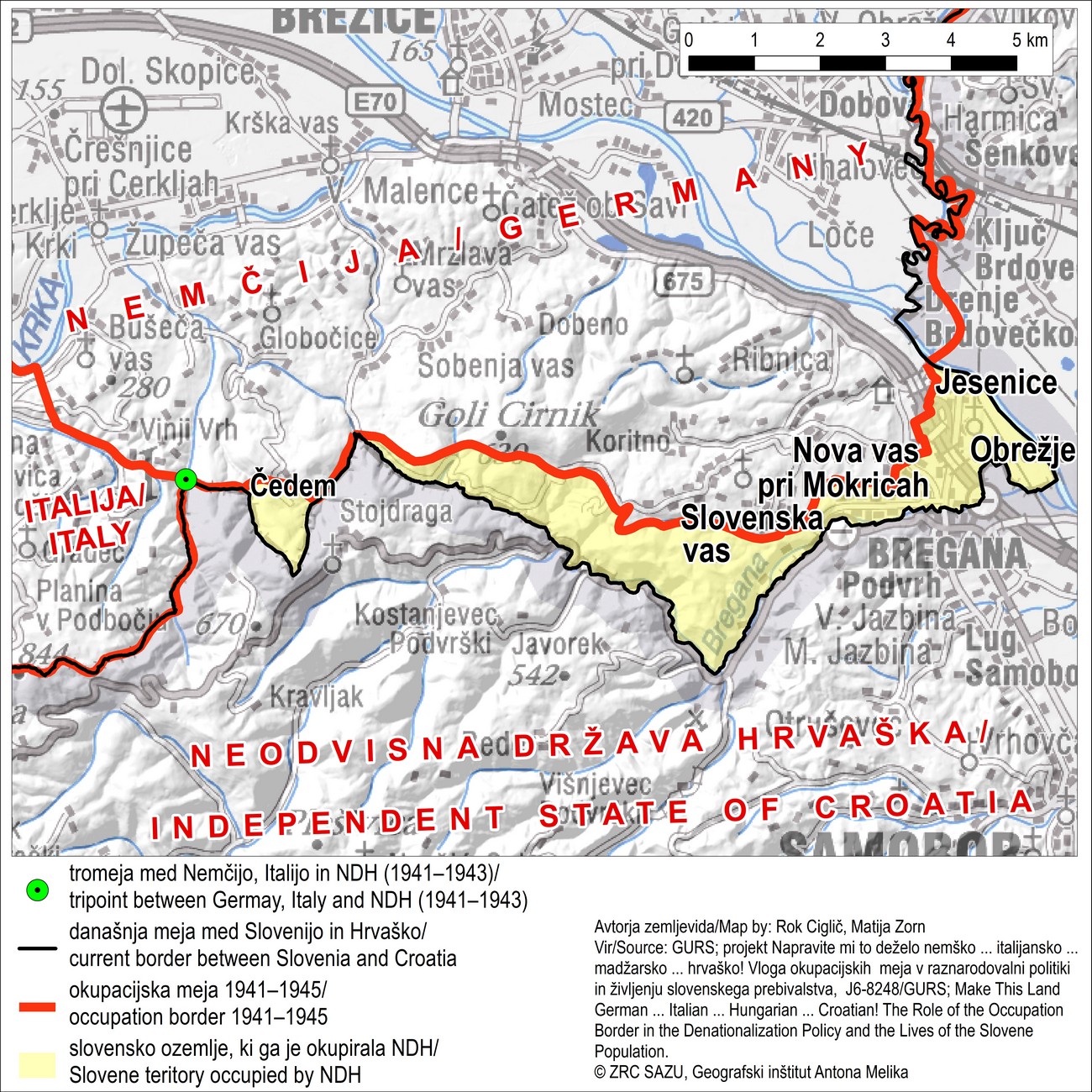The border between Germany and the Province of Ljubljana ran from the eastern suburbs of Ljubljana towards the southeast, north of Stična, Šentrupert and Krmelj, past Bučka, which was on the German side, towards Zameško, where it reached the Krka River. It proceeded along the Krka River past Kostanjevica, which was on the Italian side, towards Bušeča vas. Before Bučeča vas the border crossed the Krka River and turned towards the Gorjanci mountain range. Near Gadova Peč it reached the tripoint between Germany, the Province of Ljubljana and the Independent State of Croatia (NDH). The border demarcated by Hitler was a strategic border. The Sava River would have been the natural choice for a boundary, but the Germans wanted to control the area south of the Sava to defend the economically important area. This strategic decision is proved by the fact that the border ran across hilly terrain, which provided the Germans with a view of the Italian borderland.
The border between the Province of Ljubljana and the NDH ran from the old Rapallo border, along the Kolpa River and then along the former border between the Drava Banate and Croatia towards Gadova Peč.
A small part of the Dolenjska region, i.e. five villages beneath the Gorjanci mountain range, was occupied by the NDH, which then incorporated these villages into its administrative system. One of the greatest problems these villages faced was the expatriation of priests, which meant that spiritual care was only occasional and received from the Franciscan monastery in Samobor.
These new borders cut into the Dolenjska region, dividing it into three parts. Germany decided to fortify the border so it secured it along the entire borderline, not only that with the NDH but that with the Province of Ljubljana too. The population was being expatriated from the border zone to make room, for the Gottscheers among others. Official crossing of the border became a great problem for those who had to or wanted to cross it for business, agricultural or other needs.
Due to the partisan movement, in 1942 the Italians decided that they too would fortify the border with the NDH. They initially planned to fortify the border at the Gorjanci mountain range, but then decided to fortify it at the Gorjanci foothills, which meant that they would encircle them. In the Dolenjska region they began fortifications in the east and gradually moved westward; they also enclosed Novo mesto by a wire.
